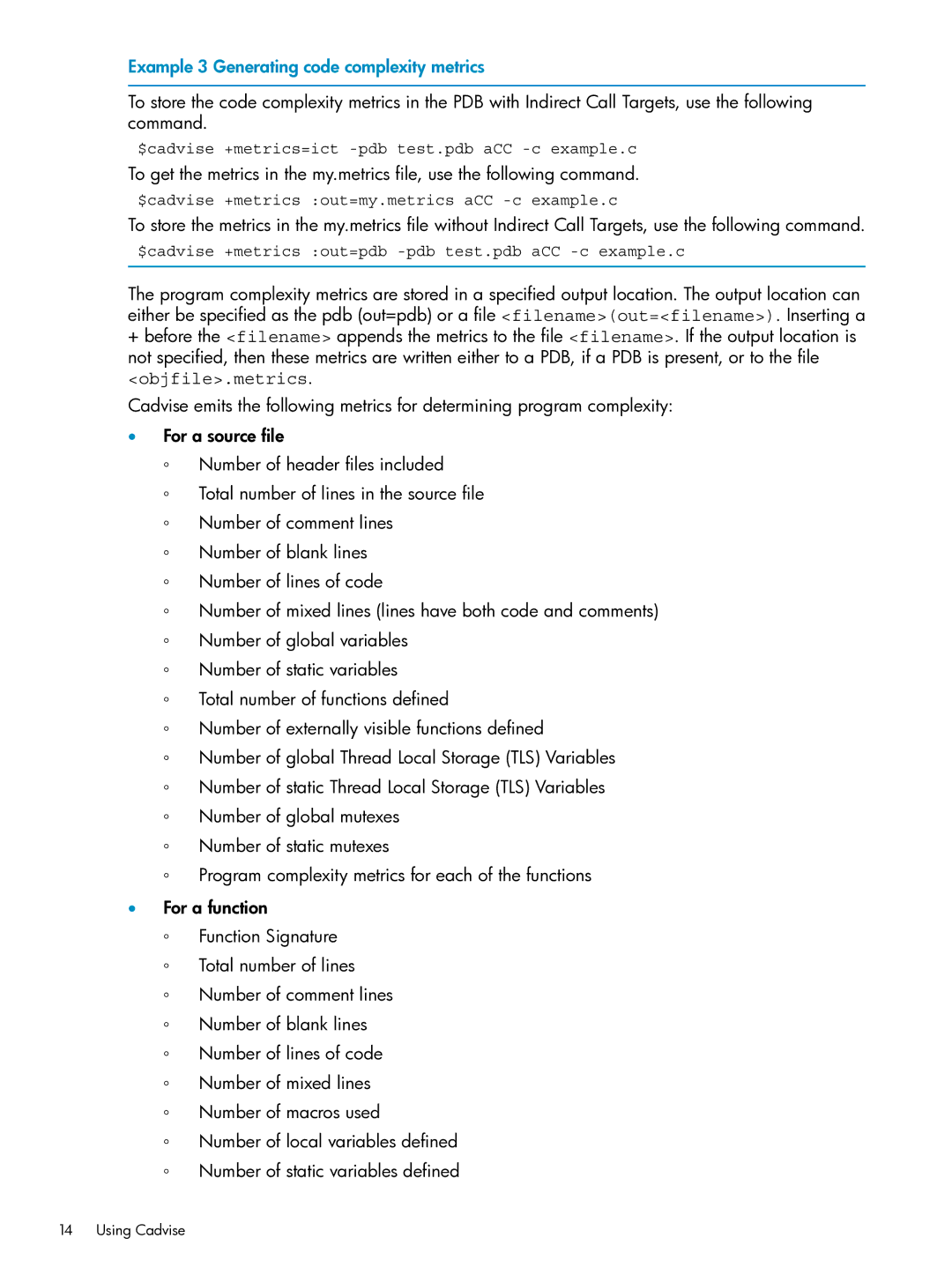
Example 3 Generating code complexity metrics
To store the code complexity metrics in the PDB with Indirect Call Targets, use the following command.
$cadvise +metrics=ict
To get the metrics in the my.metrics file, use the following command.
$cadvise +metrics :out=my.metrics aCC
To store the metrics in the my.metrics file without Indirect Call Targets, use the following command.
$cadvise +metrics :out=pdb
The program complexity metrics are stored in a specified output location. The output location can either be specified as the pdb (out=pdb) or a file <filename>(out=<filename>). Inserting a
+before the <filename> appends the metrics to the file <filename>. If the output location is not specified, then these metrics are written either to a PDB, if a PDB is present, or to the file
<objfile>.metrics.
Cadvise emits the following metrics for determining program complexity:
•For a source file
◦Number of header files included
◦Total number of lines in the source file
◦Number of comment lines
◦Number of blank lines
◦Number of lines of code
◦Number of mixed lines (lines have both code and comments)
◦Number of global variables
◦Number of static variables
◦Total number of functions defined
◦Number of externally visible functions defined
◦Number of global Thread Local Storage (TLS) Variables
◦Number of static Thread Local Storage (TLS) Variables
◦Number of global mutexes
◦Number of static mutexes
◦Program complexity metrics for each of the functions
•For a function
◦Function Signature
◦Total number of lines
◦Number of comment lines
◦Number of blank lines
◦Number of lines of code
◦Number of mixed lines
◦Number of macros used
◦Number of local variables defined
◦Number of static variables defined
14 Using Cadvise
